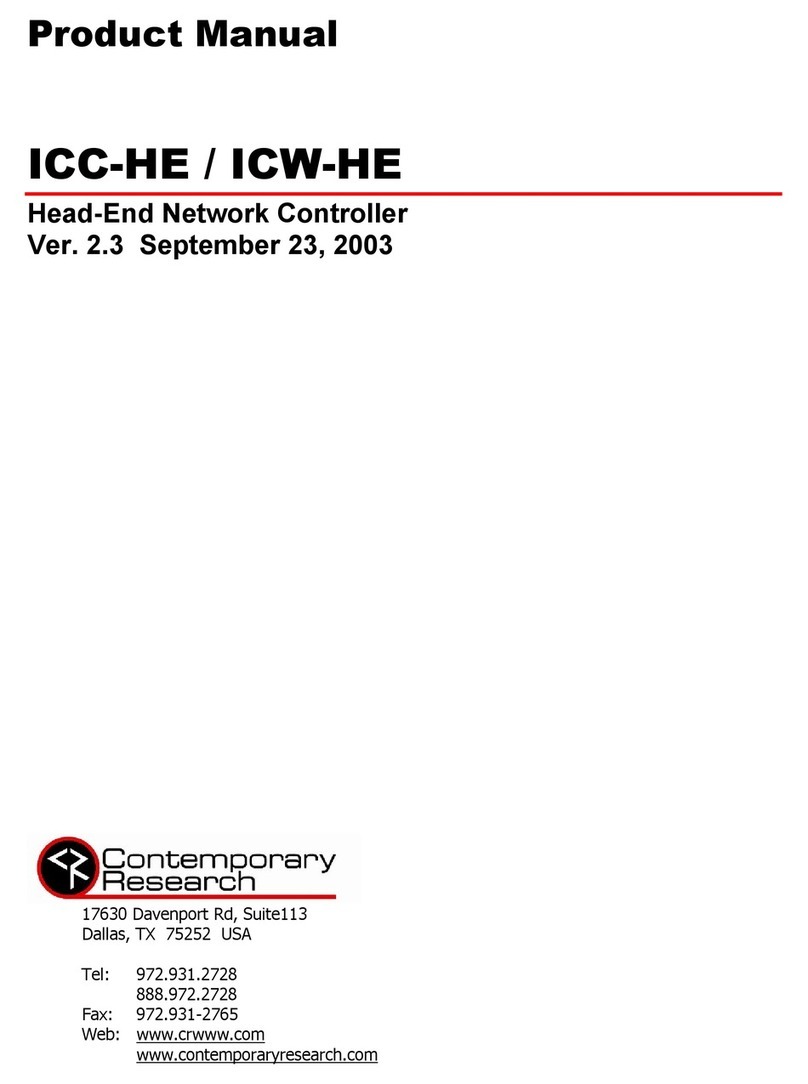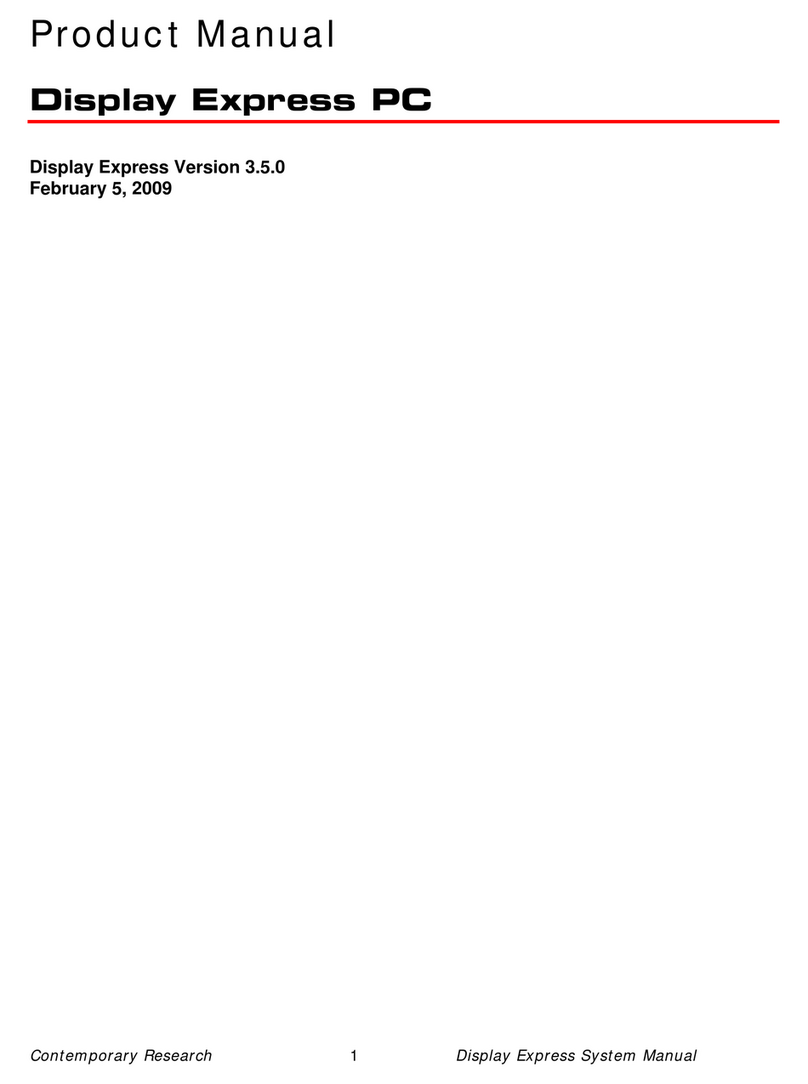
Contemporary Research 2 ICC-HE Head End
Table of Contents
Overview.............................................................................................................................................3
New Features (3.1).................................................................................................................................3
Specifications......................................................................................................................................4
Physical.................................................................................................................................................4
Front Panel............................................................................................................................................4
Control Connections ...............................................................................................................................5
iCW-Net Connections..............................................................................................................................5
iCC-Net Connections...............................................................................................................................6
Power Connections.................................................................................................................................6
Includes ................................................................................................................................................6
Installation .........................................................................................................................................7
Remote Control Connection.....................................................................................................................7
RF Coax and iCC-Net Operation...............................................................................................................7
AC Power and Net LED operation.............................................................................................................7
I/O Port Connection................................................................................................................................7
RS-232 Terminal Commands ..............................................................................................................8
RS-232 Control Protocol.....................................................................................................................9
Overview...............................................................................................................................................9
Command String Structure......................................................................................................................9
Command format ...................................................................................................................................9
RS-232 HE Commands......................................................................................................................10
RS-232 Controller Commands ..........................................................................................................11
General Commands ..............................................................................................................................11
Audio Commands .................................................................................................................................12
Channel Commands..............................................................................................................................13
Tuning Commands ...............................................................................................................................14
On-Screen Text Commands...................................................................................................................15
RS-232 Response..............................................................................................................................16
Response String Structure.....................................................................................................................16
RS-232 HE Response ........................................................................................................................17
RS-232 Device Response..................................................................................................................18
iC-Net SmartZones............................................................................................................................20
System Map ......................................................................................................................................21
Typical RF and ICC-Net Signal Flow .................................................................................................22
Safety Instructions...........................................................................................................................23
Limited Warranty and Disclaimer.....................................................................................................24
RF Channel Frequencies ...................................................................................................................25






























